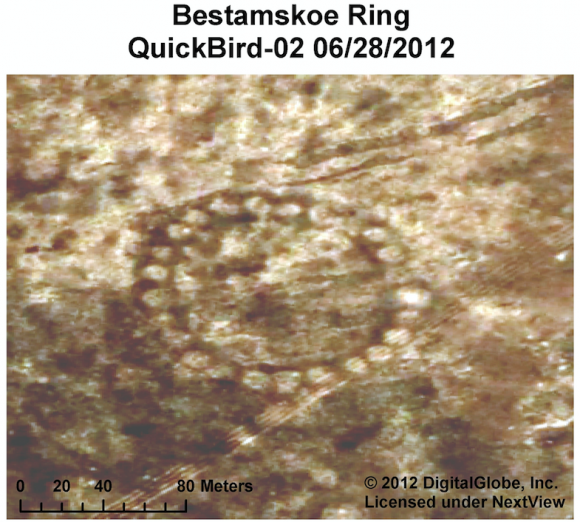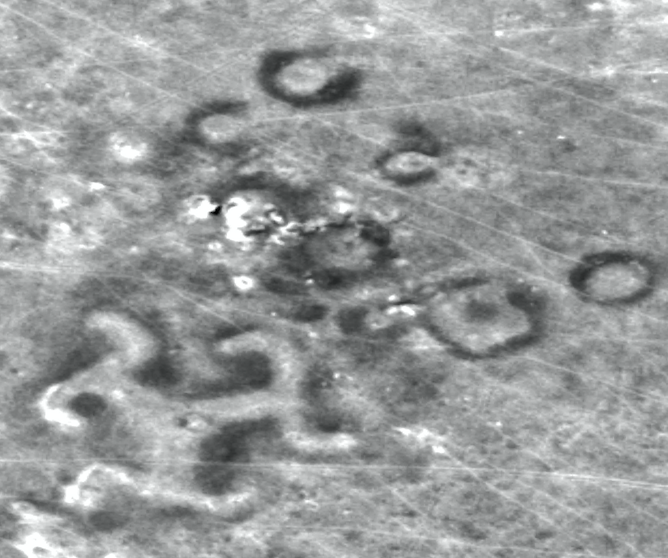 aNewDomain — There are still big things to discover, things that force us to rethink big ideas. Sometimes you can find them while you are sitting on your butt surfing Google Earth.
aNewDomain — There are still big things to discover, things that force us to rethink big ideas. Sometimes you can find them while you are sitting on your butt surfing Google Earth.
Here’s proof that everything awesome hasn’t yet been figured out: Kazakhstan’s amazing steppe geoglyphs.
Conventional archeological wisdom says that nomadic people didn’t create much in the way of culture — beyond, perhaps, epic poems like the Kyrgyz Manas, which were passed from one generation to the next via oral memorization. In most of the former Soviet republics of Central Asia, for example, there was little written language before the invading Russians introduced Cyrillic about a century ago.
The Kyrgyz, Uzbeks and their predecessors didn’t build much before the Mongol era. They were nomads. Nomads move. They don’t build. Right?

Wrong.
In the Turgai region of northern Kazakhstan, there are at least 260 mounds, trenches and ramparts arranged in basic shapes like circles and squares. They’re big structures that required sustained, sophisticated effort to build. And they may be 8,000 years old.
Inspired after watching a TV show about pyramids around the earth, a curious Kazakh economist and amateur scientist first spotted the geoglyphs while scanning satellite photography viewed via Google Earth in 2007.
“The largest, near a Neolithic settlement, is a giant square of 101 raised mounds, its opposite corners connected by a diagonal cross, covering more terrain than the Great Pyramid of Cheops. Another is a kind of three-limbed swastika, its arms ending in zigzags bent counterclockwise,” reported The New York Times.
They are among the oldest structures on earth.
 More from the Times:
More from the Times:
“In the Cretaceous Period 100 million years ago, Turgai was bisected by a strait from what is now the Mediterranean to the Arctic Ocean.
“The rich lands of the steppe were a destination for Stone Age tribes seeking hunting grounds, and … research suggests that the Mahandzhar culture, which flourished there from 7,000 B.C. to 5,000 B.C., could be linked to the older figures.
“But scientists marvel that a nomadic population would have stayed in place for the time required to fell and lay timber for ramparts, and to dig out lake bed sediments to construct the huge mounds, originally 6 to 10 feet high and now 3 feet high and nearly 40 feet across.”
The change, of course, is due to millennia of erosion.
The structures are not cenotaphs — unlike the “mound culture,” where ancient peoples built earthen burial sites in Ohio and elsewhere — they do not contain artifacts. Like some of those cenotaphs, however, they are visible from the sky — even if scientists doubt that that was the original idea.
 Anyway, NASA has just released clear photos of some of the key sites in Kazakhstan.
Anyway, NASA has just released clear photos of some of the key sites in Kazakhstan.
I’ve pasted in some below. But you can download all of them here.
For aNewDomain, BreakingModern and the new SKEWEDNews, I’m Ted Rall.













